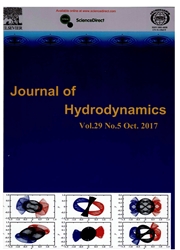

 中文摘要:
中文摘要:
在冬季,安全操作和转换虹吸的水转移效率是为在一个高纬度区域的水转向工程的大担心。这份报纸拿 Tanghe 在是的中国的 South-to-North 水转向工程的中间的线路的转换虹吸一个例子,并且与不同的水层次,流动分泌物和沉没深度在真实的冰条件下面执行试验性的研究。在转换虹吸前的冰累积过程和冰拥挤厚度分发被测试并且测量。在 t i /H (冰拥挤厚度 t 总计水水平 H 的 i ) 并且 Fr i ( 在冰果酱下面的弗鲁德数字) 被分析。为在转换虹吸前的冰拥挤厚度计算的一个方程被提出。分析结果可能在冰时期期间帮助厚度预言和类似的水转向工程的冰拥挤预防。
 英文摘要:
英文摘要:
In winter, the safe operation and the water transfer efficiency of an inverted siphon are big concerns for water diversion projects in a high latitude area. This paper takes the Tanghe inverted siphon of the Middle Route of the South-to-North Water Diversion Project in China as an example, and carries out experimental studies under the real ice condition with different water levels, flow discharges and submerged depths. The ice accumulation process and the ice jam thickness distribution before the inverted siphon are tested and measured. The characteristics of the ice jam distribution and the relationship between ti /H (ratio of ice jam thickness tt to total water level H ) and Fr, (Froude number under ice jam) are analyzed. An equation for the ice jam thickness calculation before the inverted siphon is put forward. Analysis results might help the thickness prediction and the ice jam prevention of similar water diversion projects during ice period.
 同期刊论文项目
同期刊论文项目
 同项目期刊论文
同项目期刊论文
 期刊信息
期刊信息
